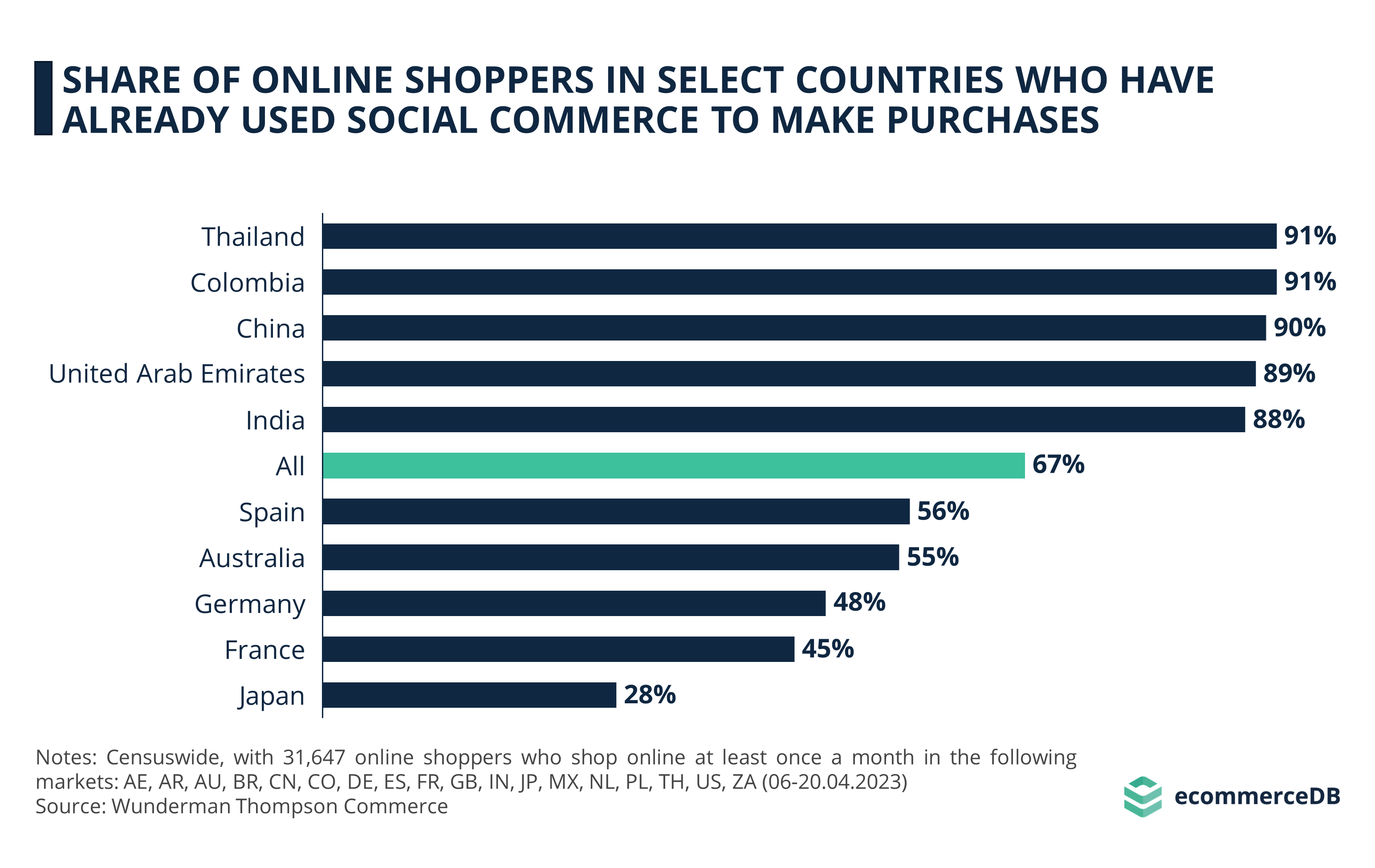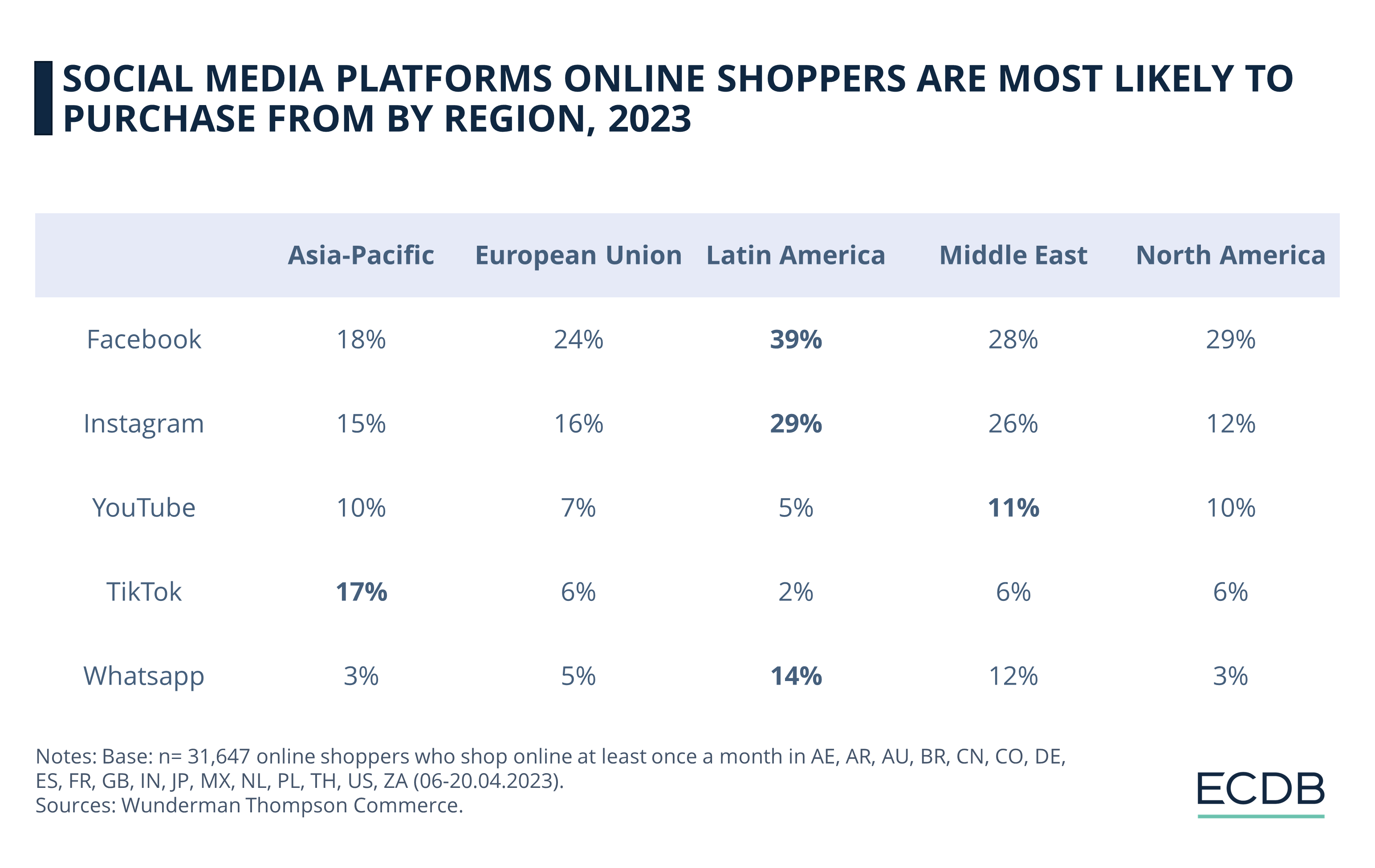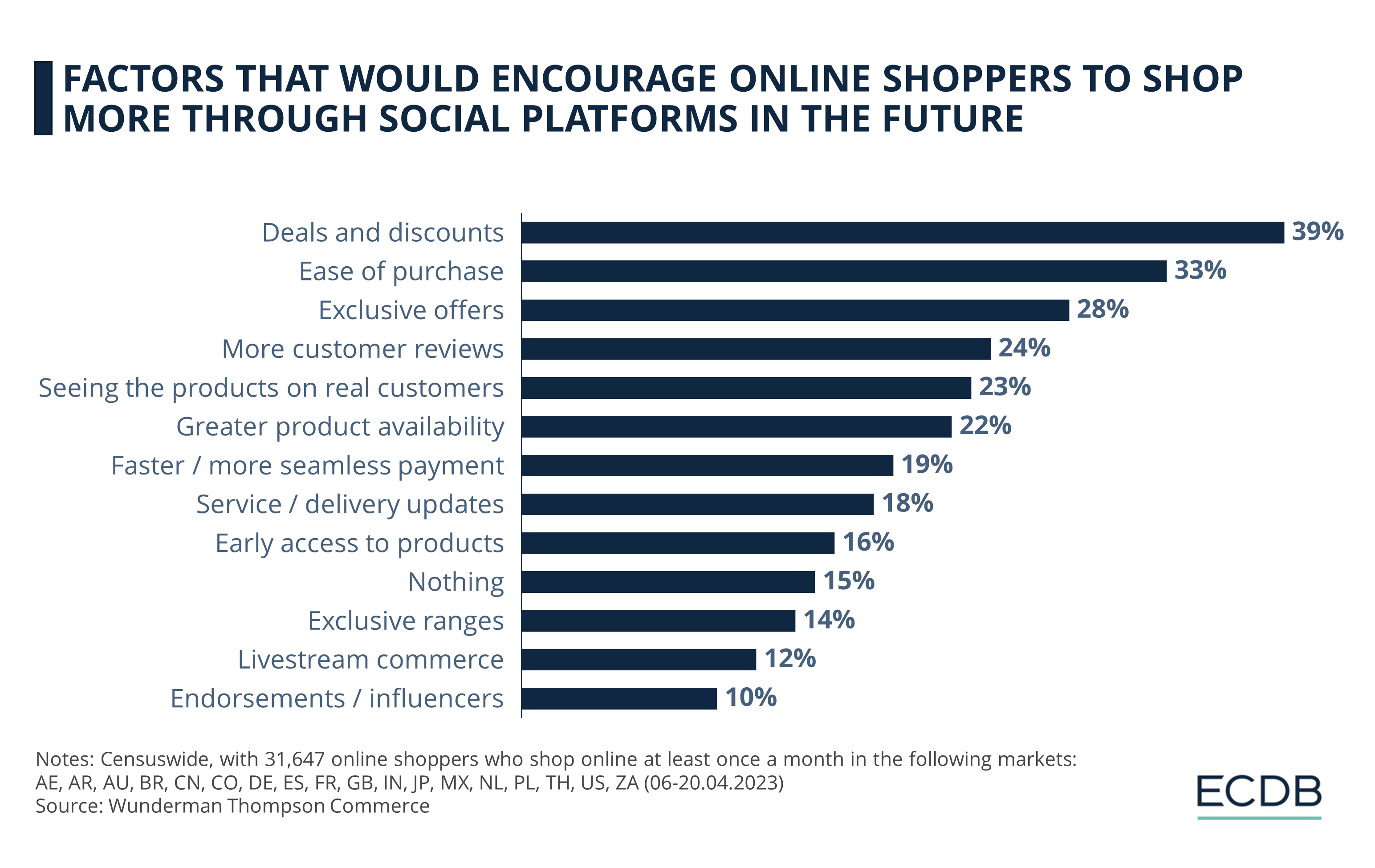Social Commerce Transforming to a 6 Trillion Dollar Market
Article by Cihan Uzunoglu | August 01, 2023
Download
Coming soon
Share

Social commerce is thriving and social media as we know it is undergoing a seismic shift. Social media platforms, once merely channels for adding your high school friends, are now bustling marketplaces. It is estimated that three quarters of the globe will be engaging on social media by 2027, and brands are cashing in on this momentum, creating dynamic and personalized shopping experiences.
As we covered before, the social commerce market - standing at US$724 billion in 2022 - is predicted to skyrocket beyond US$6 trillion by 2030, marking a transformative era in eCommerce. This shift, largely influenced by changes in consumer behavior in the face of the Covid-19 pandemic, is reshaping the commercial landscape. With the rapid growth of social commerce, it's clear that consumers worldwide are increasingly embracing the integration of social media and online shopping. Research shows that this trend is particularly prevalent in certain regions.
Social Commerce Usage Among Online Shoppers: Thailand, Colombia & China with >90%
The recently published Future Shopper Report 2023 by Wunderman Thompson Commerce illustrates a diverse landscape of social commerce adoption across the globe. Among the 18 countries surveyed, Thailand and Colombia lead the pack with an impressive 91% of consumers in both countries participating in social commerce. They're closely followed by China (90%), the United Arab Emirates (89%), and India (88%), rounding out the top five.

On the opposite end of the spectrum, we see Spain (56%), Australia (55%), Germany (48%), France (45%), and Japan (28%) recording lower adoption rates. Interestingly, despite these regional disparities, the average adoption rate across all surveyed nations still stands at a notable 67%, underscoring the significant global reach and potential of social commerce.
Building on the understanding that social media has transcended its original purpose of connecting people and has morphed into a vibrant marketplace in many parts of the world, let’s now turn our attention to the platforms powering this transformation.
Facebook and Instagram Dominate Social Commerce
Just as the adoption rates of social commerce vary globally, so do the platforms of choice. In Germany, for instance, Facebook and Instagram have been highlighted as the dominant players. But what about the rest of the world? Data from the report mentioned earlier reveals a diverse landscape of regional preferences for various social commerce platforms.

Facebook dominates in all regions, particularly in Latin America (39%) and South Africa* (38%). Following behind, Instagram makes significant strides, especially in Latin America (29%) and Middle East (26%). Despite its global popularity as a content-sharing platform, YouTube’s presence in social commerce, however, is rather modest.
The Chinese short-form video hosting service TikTok remains a lesser-utilized shopping option in social commerce, with Asia-Pacific having the highest share at 17%. Meanwhile, WhatsApp holds a small but notable share in social commerce, particularly in Latin America and South Africa, both at 14%.
Consumers Want to Shop Cheap and Easy on Social Media
In a rapidly evolving digital space, consumer behavior and preferences continuously reshape the face of online shopping. The importance of delivering an optimal customer experience is widely recognized, as a 2023 survey revealed that 7 in 10 eCommerce executives would completely overhaul their company's customer experience if time, budget, and expertise were no issue. In relation to this, global consumers' propensity to shop more via social platforms is shaped by a variety of factors, according to data from the Wunderman Thompson Commerce report.

Leading the list are deals and discounts, which 39% of shoppers noted as an encouragement. This doesn’t come as much of a surprise, given the impact of inflation on eCommerce. Ease of purchase, a key aspect of user experience, came in second in the survey with a third of consumers indicating this as a motivator. At 28%, exclusive offers also held significant sway. Less influential but still notable were factors such as more customer reviews and seeing products on real customers.
Factors below the 20% mark, which include aspects like faster payment processes, service updates, early product access, exclusive ranges, livestream commerce, and endorsements or influencers, demonstrate the diverse interests of the global consumer base. Interestingly, 15% of respondents indicated that no specific incentive would encourage more social platform shopping.
Bridging the Gap Between Inspiration and Purchase
In the context of making the purchasing process smoother, the second most popular factor mentioned in the previous section, ease of purchase, deserves further elaboration. As speed is an integral component of the shopping experience, signifying the swift transition from inspiration to finalizing a purchase, its gravity cannot be overstated.
Capturing consumer interest during the inspiration phase is critical. The Wunderman Thompson report referred to in the previous sections highlights that 61% of consumers prefer swift transitions from inspiration to purchase. While many social platforms don't fully utilize in-app purchasing, brands are optimizing their technology to connect with a platform's native checkout, enhancing efficiency and reducing friction in the customer journey. This approach could significantly boost social commerce.
As a final point to ponder, it’s interesting to observe that the share of consumers who expressed a preference for rapid conversion from inspiration to purchase was significantly higher in 2021 and 2022 (80%) compared to this year’s 61%. The discrepancy in these percentages might be indicative of the consumer's increasing comfort with a somewhat lengthier purchasing process, potentially attributed to the rising number of available channels. Observing the future evolution of these trends is necessary for a comprehensive understanding of consumer behavior.
Social Commerce: Key Takeaways
Reflecting on our exploration of social commerce, we've traversed various aspects of this dynamic digital ecosystem, spanning from global trends and market projections to nuanced consumer behaviors and platform preferences. As we draw this discussion to a close, it's time to consolidate our findings. Here are 5 succinct takeaways that capture the essence of the current state and potential future of social commerce:
The digital landscape is rapidly evolving with social commerce, predicted to reach over US$6 trillion by 2030, reflecting a significant shift in consumer behavior towards integrating social media and online shopping, largely influenced by the Covid-19 pandemic.
We see a varied global adoption of social commerce, with Thailand and Colombia leading at 91% and countries like Japan recording lower rates at 28%, yet the overall average adoption rate across all nations is a significant 67%, highlighting the extensive global impact and potential of social commerce.
The platforms used for social commerce vary globally, with Facebook leading in all regions, especially in Latin America and South Africa, while Instagram shows significant growth, and YouTube and TikTok have a modest presence, with WhatsApp holding a small but notable share, especially in Latin America and South Africa.
Consumer behavior and preferences are rapidly evolving in the digital space, with factors like deals and discounts, ease of purchase, and exclusive offers primarily motivating social platform shopping, whereas factors below the 20% mark, including faster payments, endorsements, and exclusive ranges, show the diversity of global consumer interests.
Ease of purchase, particularly swift transitions from inspiration to purchase, is crucial in enhancing the shopping experience and boosting social commerce, with 61% of consumers preferring quick conversions, although this preference has slightly decreased from previous years, potentially indicating a growing comfort with a lengthier purchasing process due to the increased number of available channels.
*: The source report for this data presents South Africa as an individual entity, separate from broader regional groupings such as the European Union or Asia-Pacific. This distinction, possibly reflective of unique market dynamics or data availability, should be kept in mind. The presentation may not offer a balanced view when comparing single country data with that of wider regions. In addition, this does not imply any intention of under-representation for the broader African region.
Sources: Wunderman Thompson Commerce, Statista, ecommerceDB
Related insights
Article
Zalando, Otto & About You: Revenue, Market Growth, Business Strategies
Zalando, Otto & About You: Revenue, Market Growth, Business Strategies
Article
Online Shopping vs. In-Store Shopping in Europe: eCommerce Recovers After Post-Pandemic Dip
Online Shopping vs. In-Store Shopping in Europe: eCommerce Recovers After Post-Pandemic Dip
Article
eCommerce in Indonesia: Market to Reach US$100 Billion Soon
eCommerce in Indonesia: Market to Reach US$100 Billion Soon
Article
Who Is the Average walmart.com Shopper? Customer Base, Purchase Drivers & Consumer Insights
Who Is the Average walmart.com Shopper? Customer Base, Purchase Drivers & Consumer Insights
Article
eCommerce in India: How Young Consumers Like to Shop and Engage Online
eCommerce in India: How Young Consumers Like to Shop and Engage Online
Back to main topics